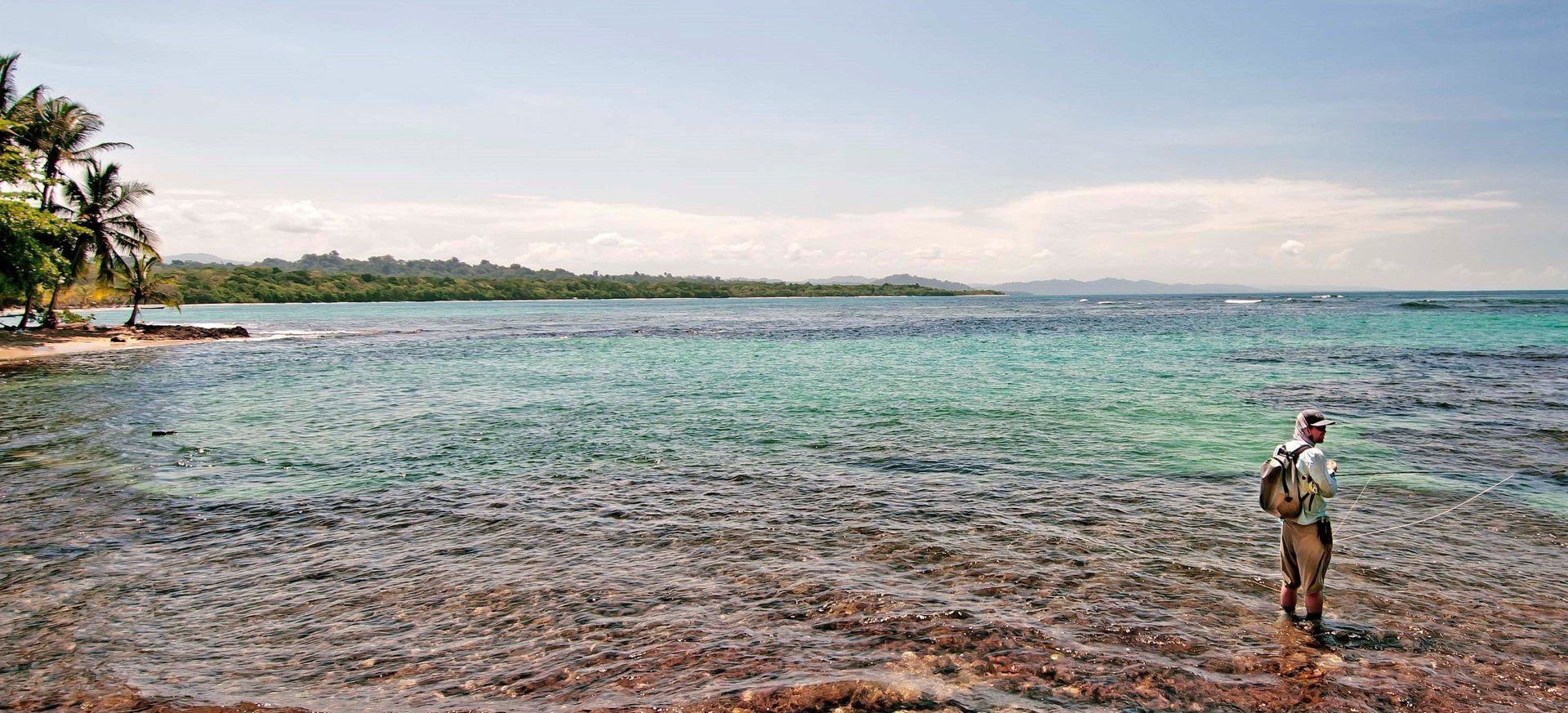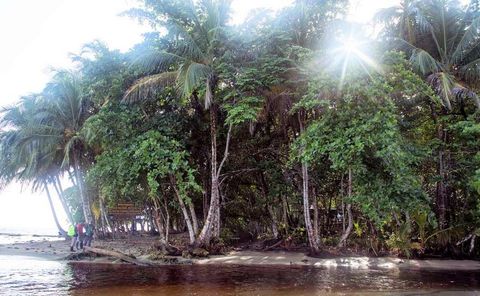
Costa Rica

Costa Rica, officially the Republic of Costa Rica, is a Central American country, bordered by Nicaragua to the north, Panama to the southeast, the Pacific Ocean to the west and the Caribbean Sea to the east. It has a population of around 4.5 million, of which nearly a quarter live in the metropolitan area of the capital and largest city, San José.
The primary language spoken in Costa Rica is Spanish, Some native languages are still regionally spoken, including Bribri, Maléku, Cabécar and Ngäbere languages, some of which have several thousand speakers in Costa Rica - others a few hundred. Some lanugages, such as Teribe and Boruca, have fewer than a thousand speakers. A Creole-English language, Jamaican patois (also known as Mekatelyu), is spoken along the Caribbean coast. About 10.7% of Costa Rica's adult population (18 or older) also speaks English, 0.7% French and 0.3% speaks Portuguese or German as a second language.
The highest point in the country is Cerro Chirripó, at 3,819 metres (12,530 feet); it is the fifth highest peak in Central America. There are 14 known volcanoes in Costa Rica with the highest being Irazú Volcano (3,431 metres or 11,257 feet). The largest lake in Costa Rica is Lake Arenal.
Costa Rica also comprises several islands. Cocos Island (24 square kilometres or 9.3 square miles) stands out because of its distance from the continental landmass at 480 kilometres (300 miles) from Puntarenas, but Calero Island is the largest island of the country (151.6 square kilometres or 58.5 square miles). Over 25% of Costa Rica's national territory is protected by SINAC (the National System of Conservation Areas), which oversees all of the country's protected areas.
Costa Rica is home to a rich variety of plants and animals, possessing the greatest density of species in the world. While the country has only about 0.1% of the world's landmass, it contains 5% of the world's biodiversity. Around 25% of the country's land area is in protected national parks and protected areas, the largest percentage of protected areas in the world (developing world average 13%, developed world average 8%). Costa Rica has successfully managed to diminish deforestation from some of the worst rates in the world from 1973 to 1989, to almost zero by 2005.
One national park, the Corcovado National Park, is internationally renowned among ecologists for its biodiversity (including big cats and tapirs) and is where visitors can expect to see an abundance of wildlife. Corcovado is the one park in Costa Rica where all four Costa Rican monkey species can be found. These include to white-headed capuchin, the mantled howler, the endangered Geoffroy's spider monkey and the Central American squirrel monkey, found only on the Pacific coast of Costa Rica and a small part of Panama.
Tortuguero National Park - the name Tortuguero can be translated as 'Full of Turtles' - is home to spider, howler and white-throated capuchin monkeys; the three-toes sloth and two-toed sloth; 320 species of birds; and a variety of reptiles. The park is recognized for the annual nesting of the endangered green turtle and is the most important nesting site for the species. Giant leatherback, hawksbill and loggerhead turtles also nest there. The Monteverde Cloud Forest Reserve is home to about 2,000 plant species, including numerous orchids. Over 400 types of birds and more than 100 species of mammals can be found there.
Over 840 species of birds have been identified in Costa Rica. As is the case in much of Central America, the avian species in Costa Rica are a mix of North and South American species. The country's abundant fruit trees, many of which bear fruit year round, are hugely important to the birds, some of whom survive on diets that consist only of one or two types of fruit. Some of the country's most notable avian species include the resplendent quetzal, scarlet macaw, three-wattled bellbird, bare-necked umbrellabird, and the keel-billed toucan. The Instituto Nacional de Biodiversidad is allowed to collect royalties on any biological discoveries of medical importance. Costa Rica is a center of biological diversity for reptiles and amphibians, including the world's fastest running lizard, the spiny-tailed iguana.
Because Costa Rica is located between eight and 12 degrees north of the Equator, the climate is tropical year round. However, the country has many microclimates depending on elevation, rainfall, topography and the geography of each particular region.
The location receiving the most rain is the Caribbean slopes of the Central Cordillera mountains, with an annual rainfall of over 5,000 millimetres (196.9 inches). Humidity is also higher on the Caribbean side than on the Pacific side. The mean annual temperature on the coastal lowlands is around 27°C (81°F), 20°C (68°F) in the main populated areas of the Central Cordillera and below 10°C (50°F) on the summits of the highest mountains.
There are 14 major river systems that originate in Costa Rica's mountains, each draining into the Caribbean Sea, the Pacific Ocean, the San Juan River or Lake Nicaragua. Freshwater species present in these watersheds include guapote (rainbow bass), guapote pinto, mojarra (tropical sunfish) and machaca. Also present in the inland freshwater rivers and lagoons are tarpon and snook. Inshore saltwater species include bonefish, permit, tarpon snook, cubera snapper, grouper, jack crevalle, mackerel and roosterfish (west coast only). Offshore saltwater species include pacific sailfish, marlin, yellowfin tuna, dorado and wahoo.

Costa Rica

Costa Rica



